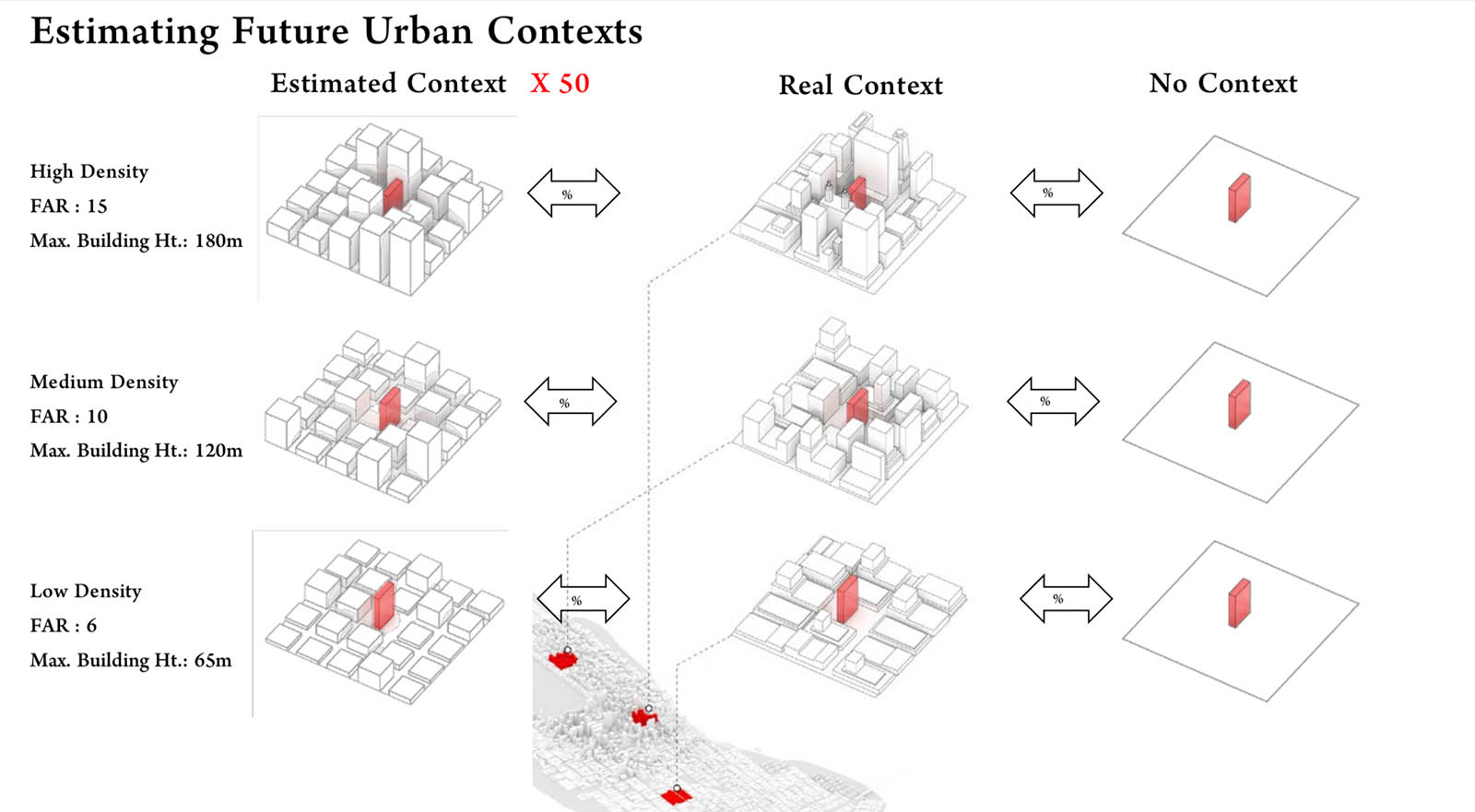Parametric Energy Simulation in Early Design

This project proposed a framework for the development of early-design guidance to inform architects and policy-makers using parametric whole-building energy simulation. It included a case study of a prototype multifamily residential building, using an exhaustive search method and a total of 90,000+ simulations. The authors performed a simple sensitivity analysis to identify the most influential of the tested design parameters on energy use intensity, which included WWR, Glass Type, Building Rotation, Building Shape, and Wall Insulation, in that order. They identified synergies and trade-offs when designing for different energy objectives, including (a) decreasing Energy Use Intensity, (b) reducing peak-loads, and (c) increasing passive survivability i.e., maintaining the safest interior temperatures in an extended power outage.
This project also investigated the effect of urban context as a source of sun shading and found it to have a substantial impact on the design optimization. Ignoring urban context in energy simulation, a common practice, would mislead designers in some cases and result in sub-optimal design decisions. Since in generalized guidelines the future building site is unknown, the researchers proposed and tested a method for generating urban contexts based on the floor area ratio and maximum building heights of an urban district.
Team Members: Holly Samuelson (Faculty), Sebastian Claussnitzer, Apoorv Goyal (MDes), Yujiao Chen (DDes), Alejandra Romo-Castillo (MDes)
Affiliated Publications:
“Parametric Energy Simulation in Early Design: High-Rise Residential Buildings in Urban Contexts,” Samuelson, H.W., Claussnitzer, S., Goyal, A. Chen, Y., Romo-Castillo, A., Building and Environment, May 20o1
“Parametric Energy Simulation of High-Rise Multi-Family Housing,” Samuelson, H.W., Goyal, A., Romo-Castillo, A., Claussnitzer, S., Chen, Y., Bakshi, A., Proceedings of Simulation for Architecture and Urban Design (SimAUD), Washington, DC, April 2015